Things You'll Need
2 lbs. beef
Meat mallet
Salt
Pepper
2 cups buttermilk
Gallon-sized food storage bag
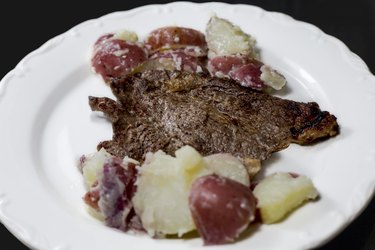
Buttermilk is a product that is a combination of milk and added microorganisms that give the milk a tart taste and thicker consistency. The microorganisms give the milk more acid, so it tends to be used more often for marinades or batters since many people don't enjoy drinking the sour flavor straight. Although buttermilk's acidity may hinder its use as a beverage, it is useful when it comes to marinating tough cuts of beef. The acid helps break down all the connective tissues in the meat to make it more tender.
Step 1
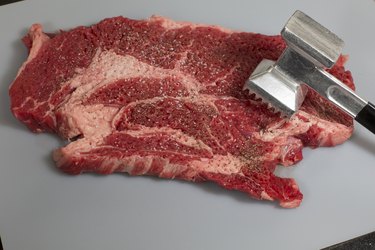
Lay 2 lbs. of beef onto a flat work surface and hit it gently with a meat mallet to begin the tenderizing process. Sprinkle enough salt and pepper to lightly cover the entire surface of the beef.
Video of the Day
Step 2
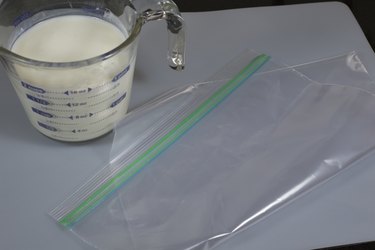
Shake the container of buttermilk. Pour 2 cups of the buttermilk into a gallon-sized food storage bag.
Step 3
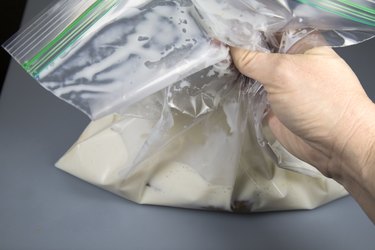
Place the seasoned beef into the storage bag. Squeeze all of the excess air from the bag, then tightly seal it closed.
Step 4
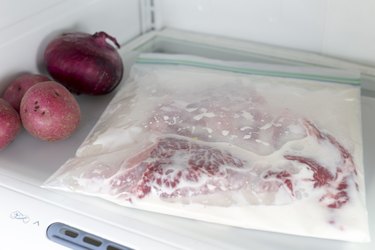
Move the beef around inside the bag to ensure it gets evenly coated with the buttermilk. Transfer the bag into your refrigerator and let the beef marinate in the buttermilk for at least 30 minutes or up to 24 hours.
Step 5

Remove the beef from the buttermilk and let any excess buttermilk drip off the beef. Discard the buttermilk and cook the beef in your preferred manner.
Tip
If you don’t have a meat mallet, cover the beef with plastic wrap and pound it lightly with a can or the bottom of a pan to gently break down the meat’s fibers so the buttermilk can fully sink into it.
Buttermilk also works well as a marinade for chicken before frying it--the buttermilk’s acid ensures the chicken stays juicy, even when exposed to high heat levels.
Warning
Always discard any marinades that have been in contact with raw meats to prevent spreading any food borne illnesses.
Always shake the bottle of buttermilk before using it.
Video of the Day